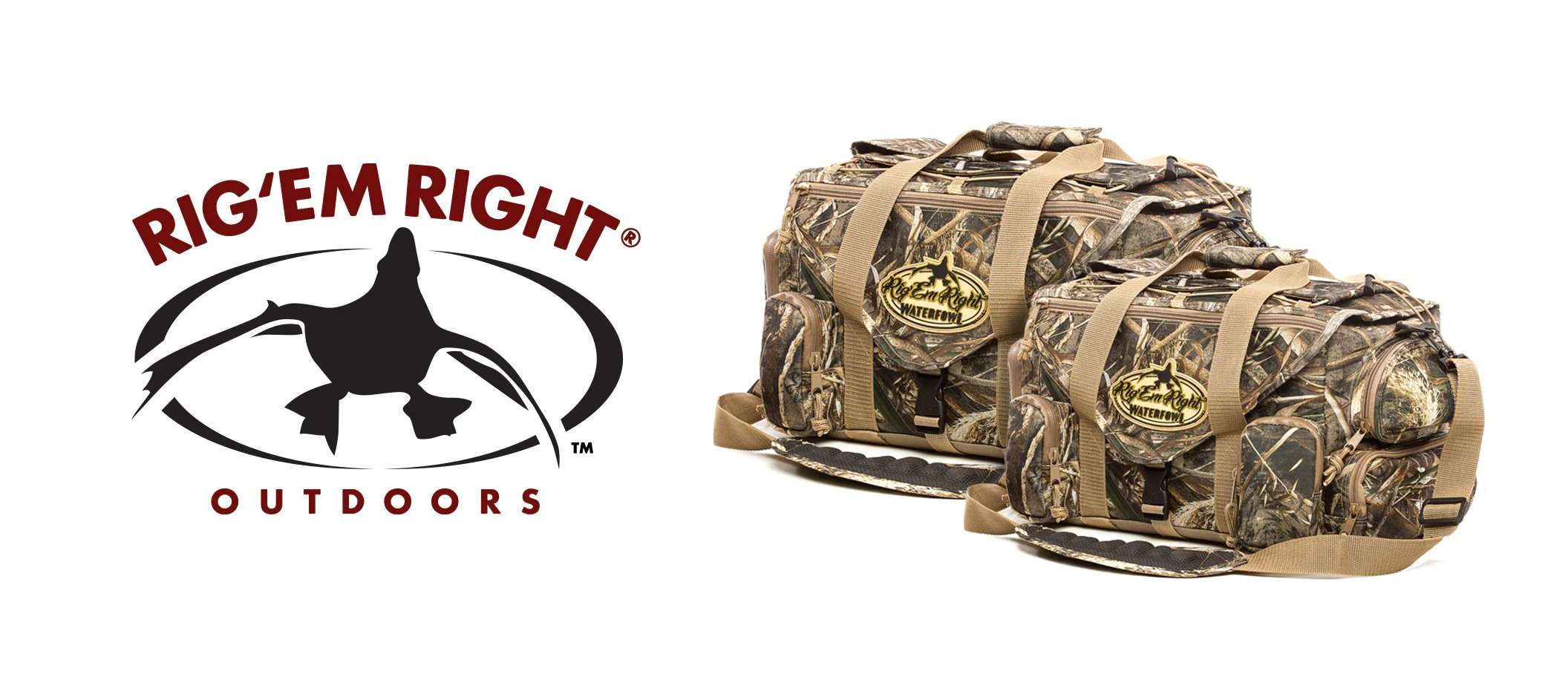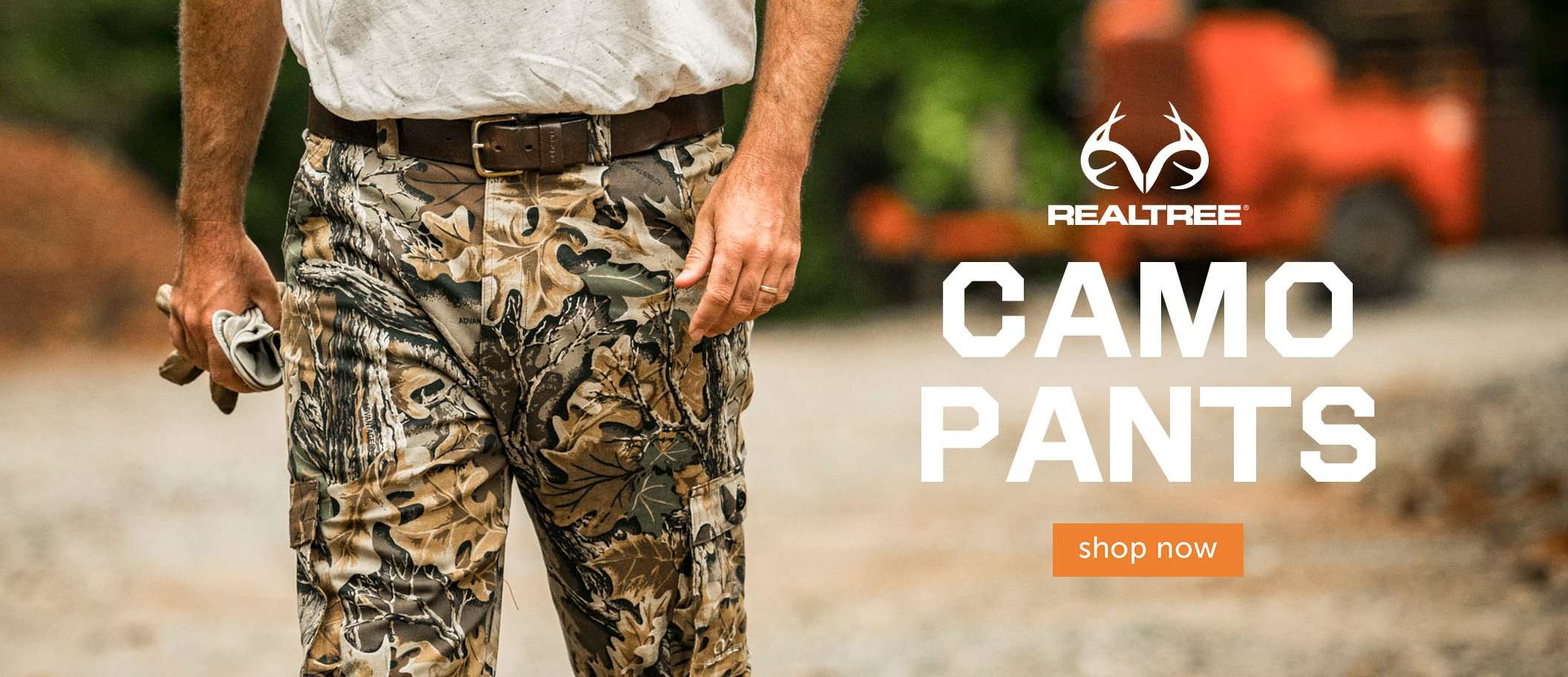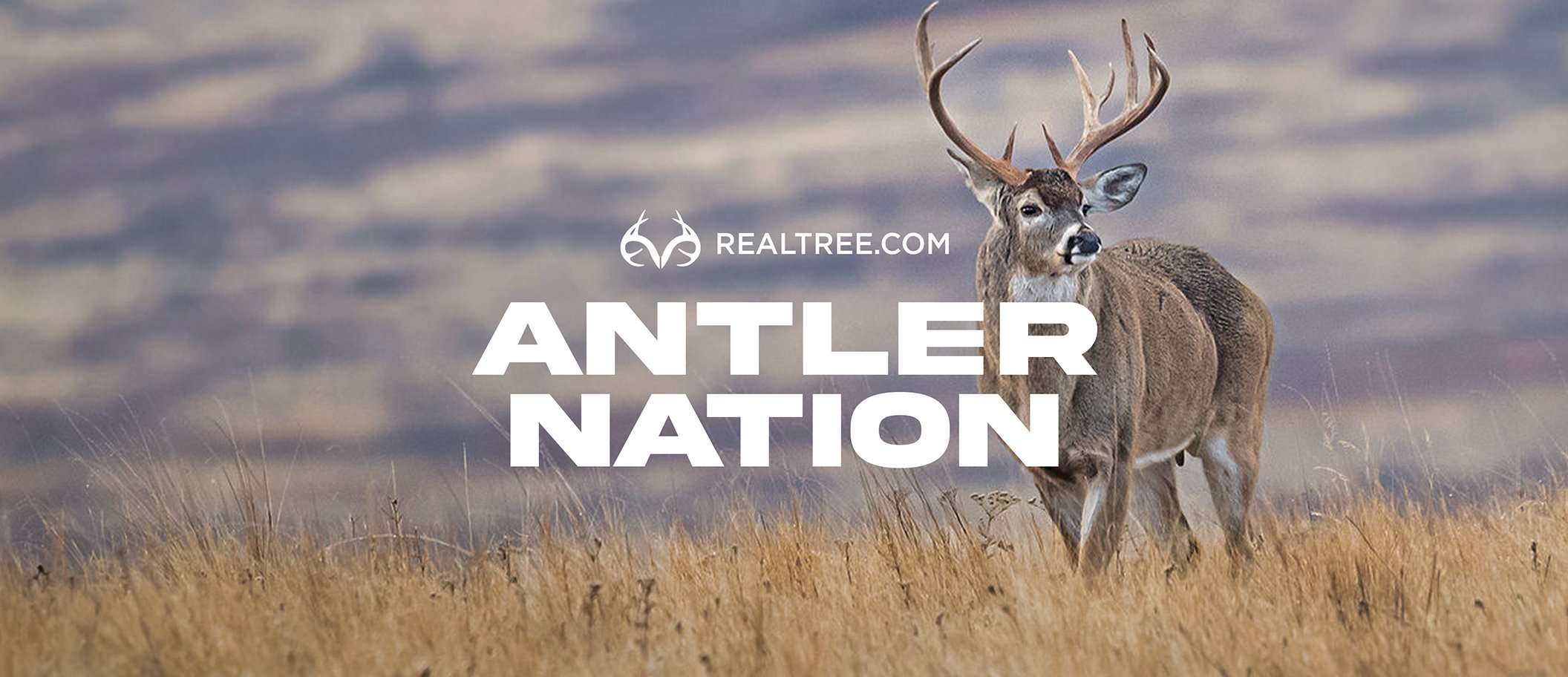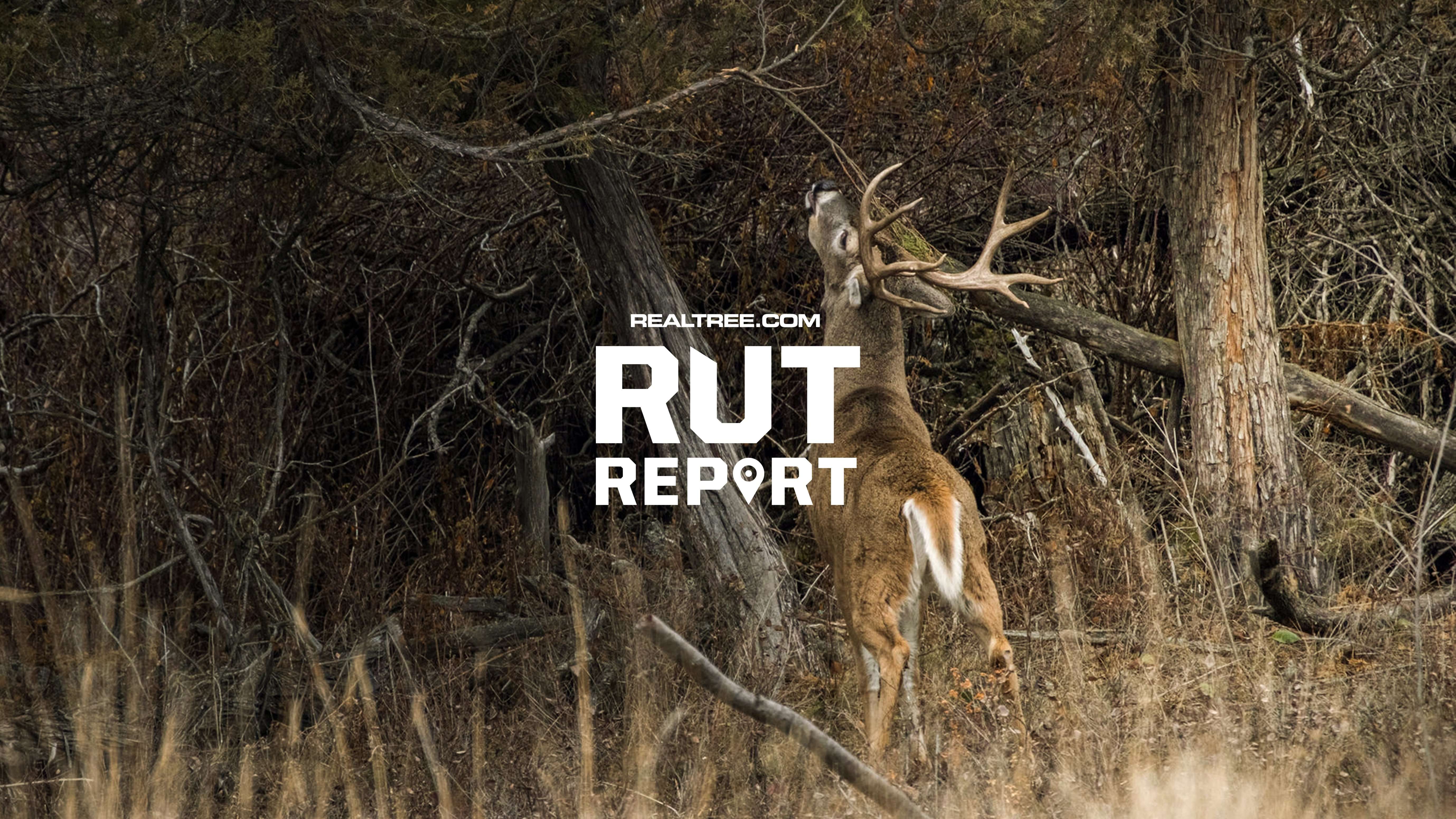Should you hang your trail cameras high on the tree or avoid placing them near your stands? Probably not
Running trail cameras is a year-round activity for a growing number of whitetail hunters. Yet, along with that has come the belief that trail cameras often spook deer.
After years of running multiple cameras, I’ve only encountered a handful of deer that seemed wary of my backwoods paparazzi campaign. But plenty of hunters take steps to hide their trail cameras from deer, including mounting them high and out of sight, or avoiding hanging them near their stands for fear of altering deer movement. Do those steps work? Not always as well as you’d think. Here’s how to really get the most out of your trail cameras for paranoid deer.
HANG ‘EM HIGH?
Many hunters try to hide their trail cameras from jumpy whitetails by hanging them high, out of a deer’s line of sight, and angling them down on a trail or scrape. Josh Sparks of Midwest Whitetail said, “If I'm in the known core range of a buck, I’m trying to disturb as little as possible, but I don't think deer spook from trail cameras. I think deer spook from the disturbance left behind.”
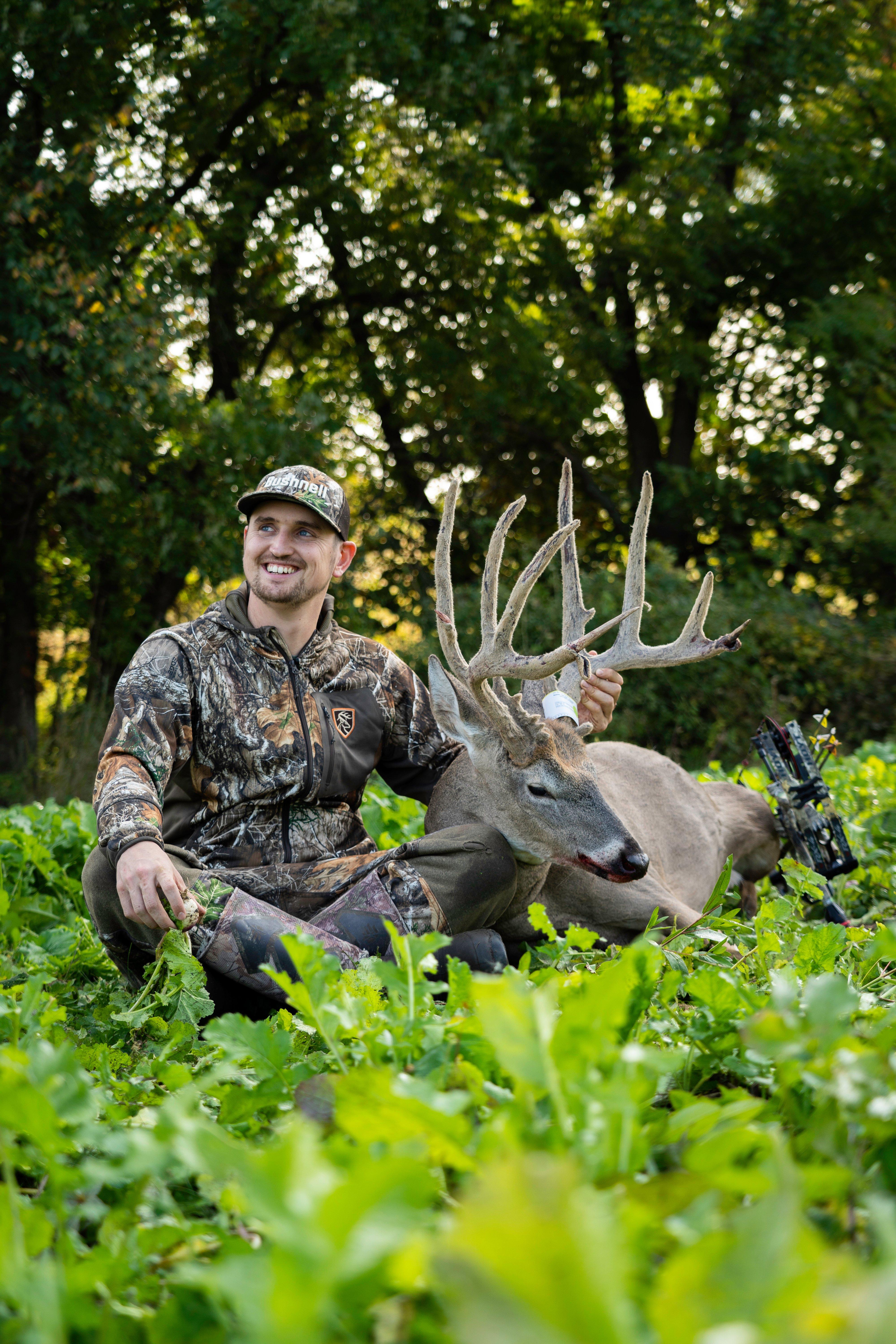
Josh Sparks worries more about disturbance in an area than he does about trail cameras spooking deer. Image by Josh Sparks.
Hanging your cameras high can actually be self-defeating from a scouting standpoint, since you’re minimizing the camera’s detection zone and requiring the deer to walk into a very small area before a picture is taken. How a trail camera captures a photo is more involved than you might realize. The camera must sense motion, wake up, and then trigger a photo. That’s a lot of work in a brief period of time, and it’s why mounting cameras flatter and lower opens the detection zone, allowing deer to stay in it longer and resulting in more photos.
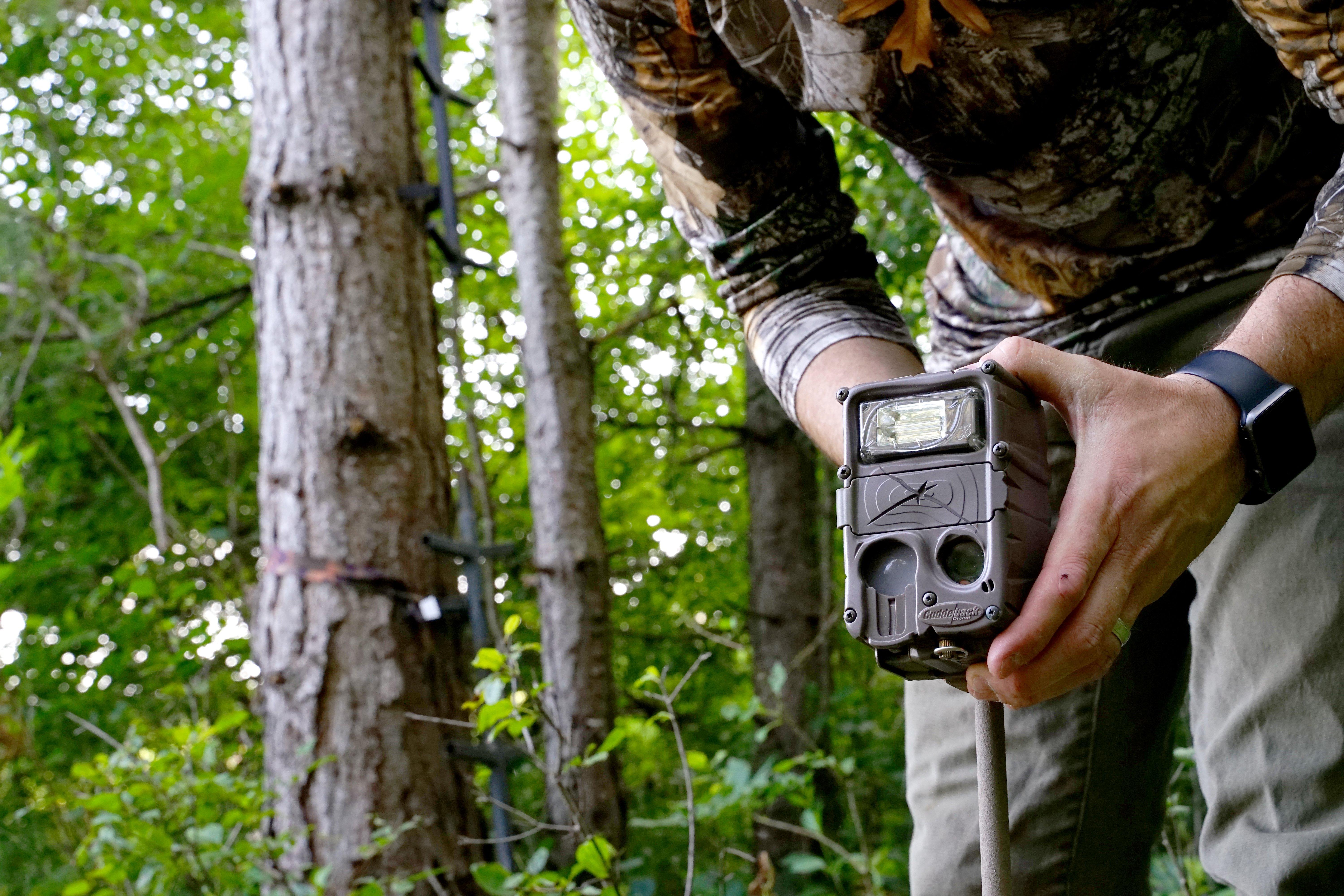
Placing cameras at a deer’s level results in more photos because the deer are in the camera detection zone for a longer period of time versus on high cameras angled downward. Image by Paul Annear.
If cameras are aimed downward, moving deer pass through the detection zone quickly. If you are mounting your cameras high, scrapes are one of the best locations, since you can spotlight the detection zone onto a very small area. And in hilly country, you can sometimes play the terrain and mount cameras high to capture photos in areas where you know deer will be spending a fair bit of time. Still, in most scenarios, mounting trail cameras at standard height is the best bet.
DO CAMERAS REALLY SCARE DEER?
If there is a big buck in your area, someone else probably has it on trail camera. Maybe that wasn’t the case 10 to 12 years ago, when fewer cameras were on the landscape. But now, every deer hunter I know owns some sort of a trail camera.
When targeting specific bucks, Sparks said, “I am more cautious in my approach and attentive to as many details as possible when hanging a camera for a target buck, but I will still put a camera where I think I'm going to get the best intel and ultimately the best photos. I think a newly placed camera is something new to their environment that might spark an initial curiosity, but to say cameras spook them to the point where it affects hunting, I'm not going that far. Between my own observations and the 40 to 50 guys on the Midwest Whitetail team, I can't conclusively say many deer spook because of cameras.”
Ultimately, deer are going to live and spend time where they feel safe. And though you might think you have all of the best trails covered, deer walk odd routes at times. Trail cameras definitely don’t lie, but they don’t tell the whole truth, either. You might be convinced a big buck is leery of your trail cameras, but there are certain times of the year when some areas simply have less deer activity. Sparks said, “A mature buck’s priorities shift at certain times of the hunting season, so if you don't shift your scouting based on these changes, naturally, it will feel like they all of a sudden have vanished. To get mature bucks on camera you have to put them where deer are, and at some points throughout the hunting season, your property might just not be the best option for them.”
HIDE ‘EM LOW
When trying to make your camera less noticeable to deer or humans, look for good cover closer to the ground. If you have a large stump or a few downed trees near a good camera tree, use this to your advantage. Even if deer see the camera tucked into debris, they might not be able to reach the camera to investigate further.

Look for good cover to help hide trail cameras at ground level. Image by Paul Annear.
Sparks prioritizes the right spot, even if a camera can be seen, over a marginal deer movement location where a camera can be hidden. He said camera stakes can be excellent tools. “I often throw up a trail camera stake mount for the convenience of where I want a camera, as opposed to prioritizing hiding it,” he said.
Near fence gap openings, for example, you can place cameras on a mounting stake just offset and slightly behind the posts, which allows the camera to blend into the other fencing material. Mounting trail cameras in areas where deer need to move quickly can also distract them from the presence of your camera. Placing a camera where deer hop the fence will not only result in unique photos, but deer will be more concerned about making the jump rather than your camera 15 feet away.
Don’t Miss: *HOW TO GET YOUR BUCK IF YOU ONLY HAVE A FEW DAYS TO HUNT
SHOULD YOU PUT CAMERAS NEAR TREE STANDS
Would you put a Ring doorbell camera in the woods behind your house if you thought intruders were frequenting your front door? This is a no-brainer. You need to run trail cameras near your tree stands if you want the best hunting intel. Sparks said, “I hang trail cameras next to my stands because the intel of knowing what my tree stands are seeing is important. I've also been able to utilize historical trail camera data, and it's aided in selecting stands during times of the year for areas where I would’ve otherwise thought maybe didn’t make sense.”
I keep a phone SD card checker in my pack. When I mount a camera near a stand I want to leave alone, I let it take a few photos of me and then check the photos so I can make adjustments. It’s tedious but worth it for those screen-saver buck photos.
DOES FLASH TYPE MATTER?
I had one of my best deer seasons ever for daylight buck photos in 2022, and I ran several white-flash cameras. Keep in mind deer see extremely well at night, so the burst of a traditional white flash camera isn’t as drastic for them.
Infrared cameras emit a slight red flash. These are the most common flash type and the most versatile cameras, because the flash range is optimal. Infrared cameras work best when you have trees in the backdrop of where you expect a photo to be taken. Trees in the background reflect the IR flash throughout the frame and brighten the photo.
Black flash, or no-glow cameras, don’t emit any visible light, but the photo quality isn’t as crisp. No-glow cameras do not stop movement as well as IR or white-flash cameras, but the advantage is humans and deer will not see any visible flash. There is no perfect answer for trail camera flash type. It’s a matter of personal preference and where you like to run your cameras to receive the best quality photo.
CHECK OUT OUR LATEST CAMO PATTERN: REALTREE APX
SOLAR IS THE FUTURE
To keep intrusion minimal and save money long-term, you should consider solar panels for some of your best hunting spots so you can leave your target deer undisturbed. As Sparks said, it’s rarely the camera that spooks deer, but the human intrusion to maintain the camera. Standard cameras have SD cards to check, but even cellular cameras require attention to maintain power. The whole advantage to cellular cameras is staying out of the woods, and so you should consider investing in solar packs for some of your best spots. I have a few trail cameras I haven’t touched since September 2022 because they are on solar packs. The up-front cost is higher, but you make up for it down the road by savings on batteries.
WRAPPING UP
It’s easy to overthink trail camera deployment when you have it stuck in your head that cameras spook deer. I once heard someone say, “If deer ran from everything they were scared of, they would never stop running.” Deer are likely to accept and be conditioned to a certain level of trail camera intrusion. Place your cameras in the best places to get photos and in the areas where you want to scout. Use natural cover, or tools like camera stakes, to conceal them as necessary, but don’t overanalyze things.


